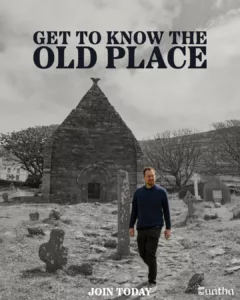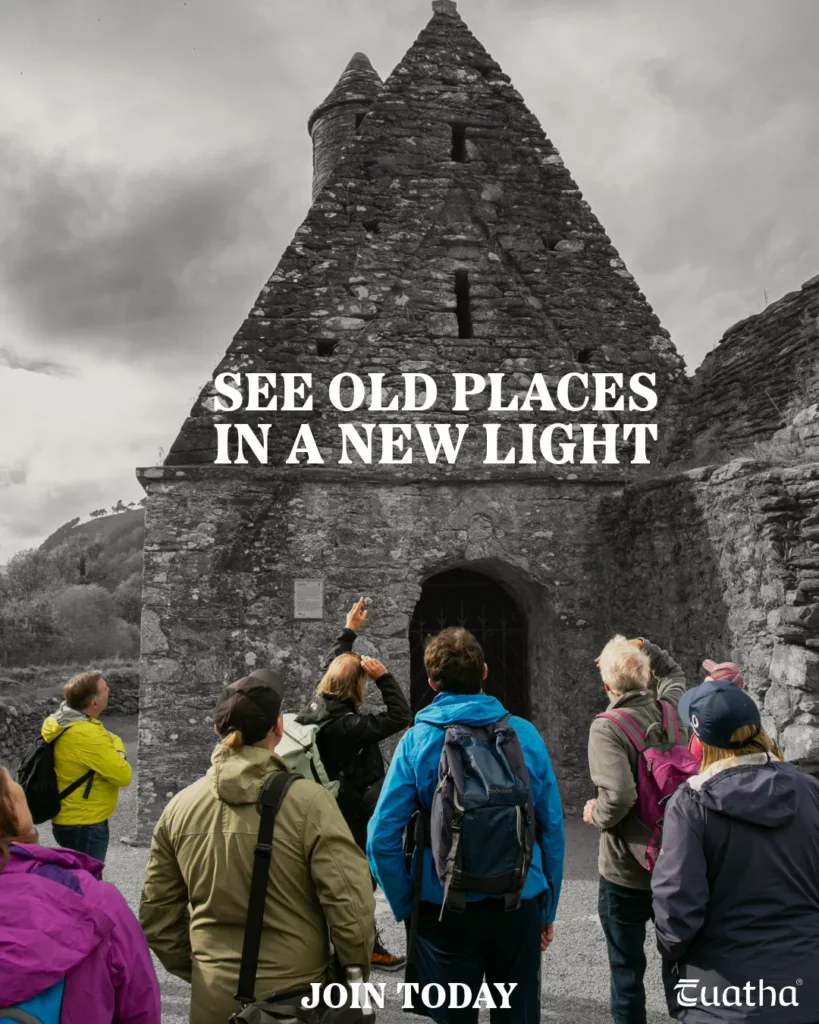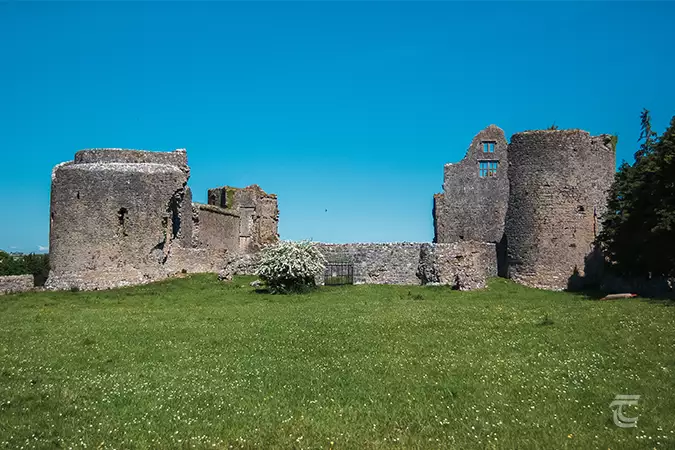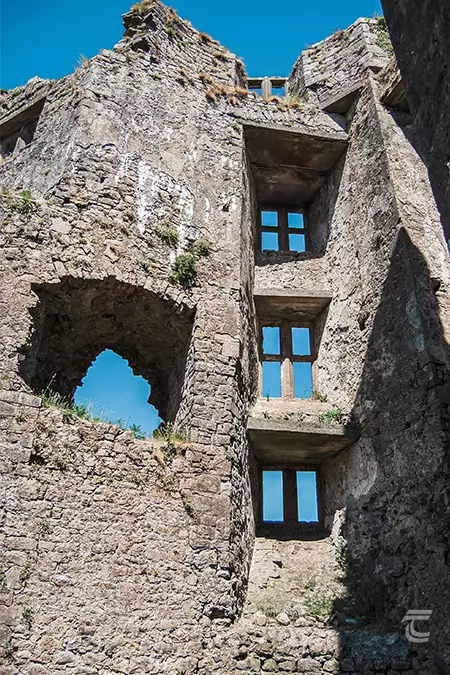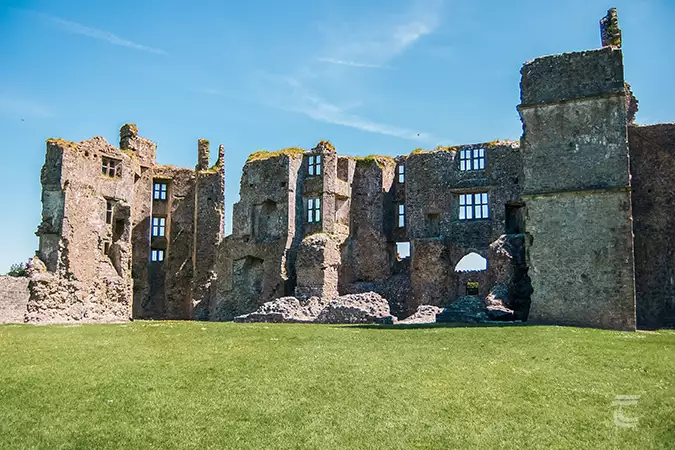Roscommon Castle
Roscommon Castle is undoubtedly one of the most important castles in Ireland. The first fortification here was built in around 1269 under the justiciar, Robert d’Ufford. This early castle was attacked numerous times before being wholly destroyed by Aedh mac Felim Ó Conchobair. The castle was then rebuilt as a royal castle between 1275–1285, at a substantial cost at the time of £3,500.
The castle was built with four large D-shaped towers at each corner, and a twin-towered gatehouse in its eastern wall. The design of the castle is highly important. Professor Tadhg O’Keeffe of UCD believes that Roscommon Castle served as the prototype of the famous castles like Beaumaris and Harlech, built by King Edward I in Wales (you can hear Tadhg discuss this in Episode 4 of the Amplify Archaeology Podcast). As well as the strong stone walls the castle was defended by deep ditches and the waters of the lake. The positioning and design of the towers was of key importance, as they were laid out in order to provide maximum flanking fire against any attacking force.
For practical information about visiting this site Click Here
Roscommon Castle is undoubtedly one of the most important castles in Ireland. The first fortification here was built in around 1269 under the justiciar, Robert d’Ufford. This early castle was attacked numerous times before being wholly destroyed by Aedh mac Felim Ó Conchobair. The castle was then rebuilt as a royal castle between 1275–1285, at a substantial cost at the time of £3,500.
The castle was built with four large D-shaped towers at each corner, and a twin-towered gatehouse in its eastern wall. The design of the castle is highly important. Professor Tadhg O’Keeffe of UCD believes that Roscommon Castle served as the prototype of the famous castles like Beaumaris and Harlech, built by King Edward I in Wales (you can hear Tadhg discuss this in Episode 4 of the Amplify Archaeology Podcast). As well as the strong stone walls the castle was defended by deep ditches and the waters of the lake. The positioning and design of the towers was of key importance, as they were laid out in order to provide maximum flanking fire against any attacking force.
For practical information about visiting this site Click Here

Roscommon Castle • Roscommon
History of Roscommon Castle
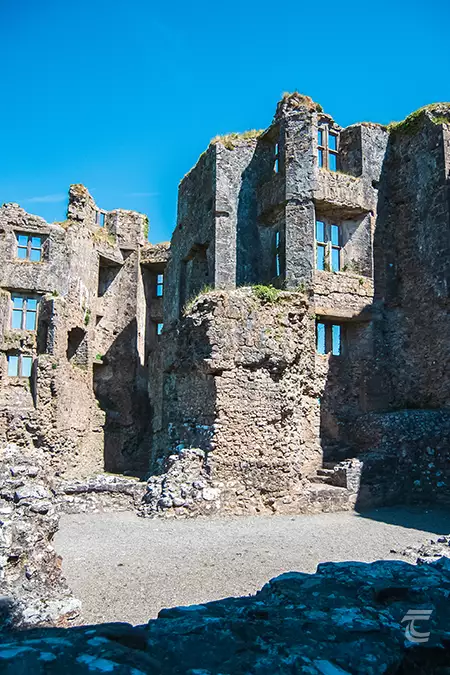
An interior view of the castle ruins • Roscommon
The location of Roscommon Castle was both strategic and symbolic. Connacht was one of the last Irish kingdoms to fall under Anglo-Norman rule after their invasions of the late 12th century. The powerful Ó Conchobair (O’Conor) kings had fought, and politically manoeuvred, with the invaders in the decades following the invasions. By the 1260s, the Anglo-Normans were locked into a deadly conflict with Aedh, son of Felim Ó Conchobair, the last King of Connacht. One of the traditional Ó Conchobair power bases was a crannóg here, on Loch na nÉan (Loughnaneane or Lough Nea) that translates to ‘the lake of the birds’. This was a place steeped in myth and legend. A key character in the famous epic Táin Bó Cúailgne, Fergus Mac Róich, King of Ulster, is said to have been buried on the shores of the lake. It was also said to be an entry point to the Otherworld. The decision to site an Anglo-Norman royal castle in this storied landscape, right next to the ancestral home of the Ó Conchobairs was a highly symbolic act indeed.
However, less than a century after it was completed, the O’Conors took possession of Roscommon castle in 1340 and held it for nearly two hundred years. However, in 1569, the castle was surrendered to the English. It was later granted to Sir Nicholas Malby in 1578, who spent a vast sum of money modernising the castle to make it fit for a member of the Tudor elite. You can see evidence for this process of modernisation in the large rectangular windows, particularly visible in the north-east of the castle. He also built an extensive walled garden, fishponds and a grand tree-lined avenue which led to Roscommon town.
Roscommon Castle was under siege by Hugh O’Donnell during the Nine Years War in 1596, and again in 1599. The castle was also attacked during the Confederate Wars of the 1640s. The bloodshed didn’t end there, as Oliver Cromwell’s forces seized the castle in 1652 and destroyed the fortifications. A fire in 1690 did severe damage to the castle and it was left to fall into disrepair through the 18th and 19th centuries.
Today you can experience this hugely significant castle for free, be sure to take the time to visit the abbey too – Roscommon is one of the most historic towns in Ireland!

An interior view of the castle ruins • Roscommon
Upper left: the southern face of the castle • Lower left: interior of the castle • Right: late 16th century windows
Top: the southern face of the castle • Middle: late 16th century windows • Bottom: • interior of the castle
Roscommon Castle Visitor Information
One of the most important castles in Ireland and still a spectacular site to explore.
